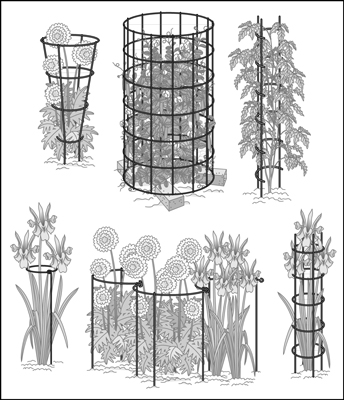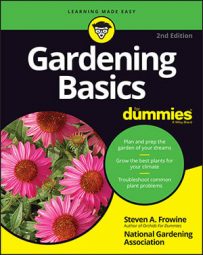Because some perennials are tall, or tall and broad, you can support them with stakes or rings. Using stakes and rings keep perennials manageable, and prevents them from falling under their own weight. Using a stouter or larger support than you think you need never hurts; if your perennials are healthy and happy, they're probably going to need it.
Resourceful gardeners like to rig their own plant supports, and certainly, nothing's wrong with bending some old coat hangers or recycling sticks and stakes of various kinds, including tree branches or twigs. But your local garden center, home store, or favorite mail-order catalog offers affordable alternatives.

Here are a few important tips to remember about using perennial supports:
Install early: Press a peony hoop over the plant before it reaches the hoop's height. This way, you can center the support right over the plant, and when the perennial does grow, the stems, leaves, and flowers will froth over the hoop and hide it from view. Early installation also reduces the risk of damaging the root system as you poke the support in.
Press the support in deeply: As the plant grows ever-larger, the stake or hoop may lean or slump. Anchoring the support deeply at the outset can make the support more stable and stronger. A foot or more into the ground is usually best, depending on the plant.
Help out with ties: As the plant grows, check on it and fasten the stem or stems to the support at regular intervals. To avoid abrading the plant tissue, use string or cloth; if you loop it once around the stem and create a second loop for attaching to the support, the plant will be able to move in a breeze but still be held gently but firmly to its appointed place.
Be tidy: Remove and store or discard the support at season's end. This step will also remind you to cut back the perennial (and mulch if your winters are cold). With a season's experience under your belt, you should now know whether the support is the right one for the job and thus worth saving or replacing. If you need something more substantial, add it to your springtime shopping list.
You really don't know whether a perennial needs support until you grow it. Whether a support is necessary depends not only on the type of plant but also on cultural conditions — a plant that may be self supporting in full sun in a protected location may need to be staked if grown in a shady spot or one with a lot of wind. Perennials that do need support need it every year.

